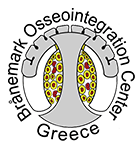It is important for a patient to have enough healthy natural bone to support a dental implant. If he doesn’t have enough bone, there are safe and effective ways to correct this insufficiency, rebuild bone and provide a strong foundation for implant-supported teeth.
Bone deficiency can be caused by a number of factors, like tooth loss, periodontal (gum) disease, tooth development defects or a facial injury (trauma). In some cases, it may also be associated with previous tooth extractions or dental procedures where efforts were not made to restore natural bone.
Below are some of the most common bone augmentation techniques.
Bone Grafting
Bone grafting is a safe and highly successful procedure that can make dental implants possible, by replacing missing bone or even “building up” new bone. To get the bone for grafting, the patient’s own bone may be used or donor bone may be obtained from a tissue bank. Often the new bone can be taken from inside the mouth.
Bone grafts are usually completed comfortably for the patient under local anesthesia (numbing of the areas that will be involved), sometimes along with intravenous sedation which makes him feel more relaxed and takes away his fears and anxieties.
Usually, antibiotics are prescribed after the procedure to help prevent infection, pain medication if needed and an antibacterial mouthwash. The patient is also instructed to avoid eating certain foods and chewing on the area where the bone graft was placed. He should expect to go on about life and be able to work while the bone graft heals.
After the bone graft has been accepted by the body and become an integrated part of the existing bone, the implants will be placed. Their integration time that varies, depending on the location of the graft and the density of the bone.
Sinus Lift (Sinus Augmentation or Sinus Elevation)
When the back teeth in the upper jaw are missing, the sinus cavity becomes larger because of the bone deterioration. Restoring those teeth is one of the most difficult restoration cases, as the patient has insufficient natural bone in this area for the placement of dental implants.
Sinus lift is a surgical procedure that aims to increase bone height in the upper jaw. It involves grafting extra bone into the maxillary sinus, so more bone is available to support a dental implant. This procedure doesn’t affect speech, intonation or cause sinus problems.
After a period of time that varies from 4 to 12 months, the upper jaw is ready for the placement of dental implants. Sinus augmentation ensures that the implants have a long lifespan and the new teeth will fit perfectly and function like natural, healthy teeth.
Ridge Expansion (Ridge Modification)
Sometimes a patient’s jaw isn’t wide enough to allow a dental implant placement. In this case, bone graft material has to be added to a small ridge that is created along the top of the jaw. The ridge is allowed to heal before placing the implant. In some cases, the implant is placed right after the expansion, whereas other situations require approximately 4 to 12 months.
This procedure can also be used to correct an unnatural, unattractive and difficult-to-clean indentation.
Ridge expansion ensures that the new teeth are long-lasting and have a strong foundation.

